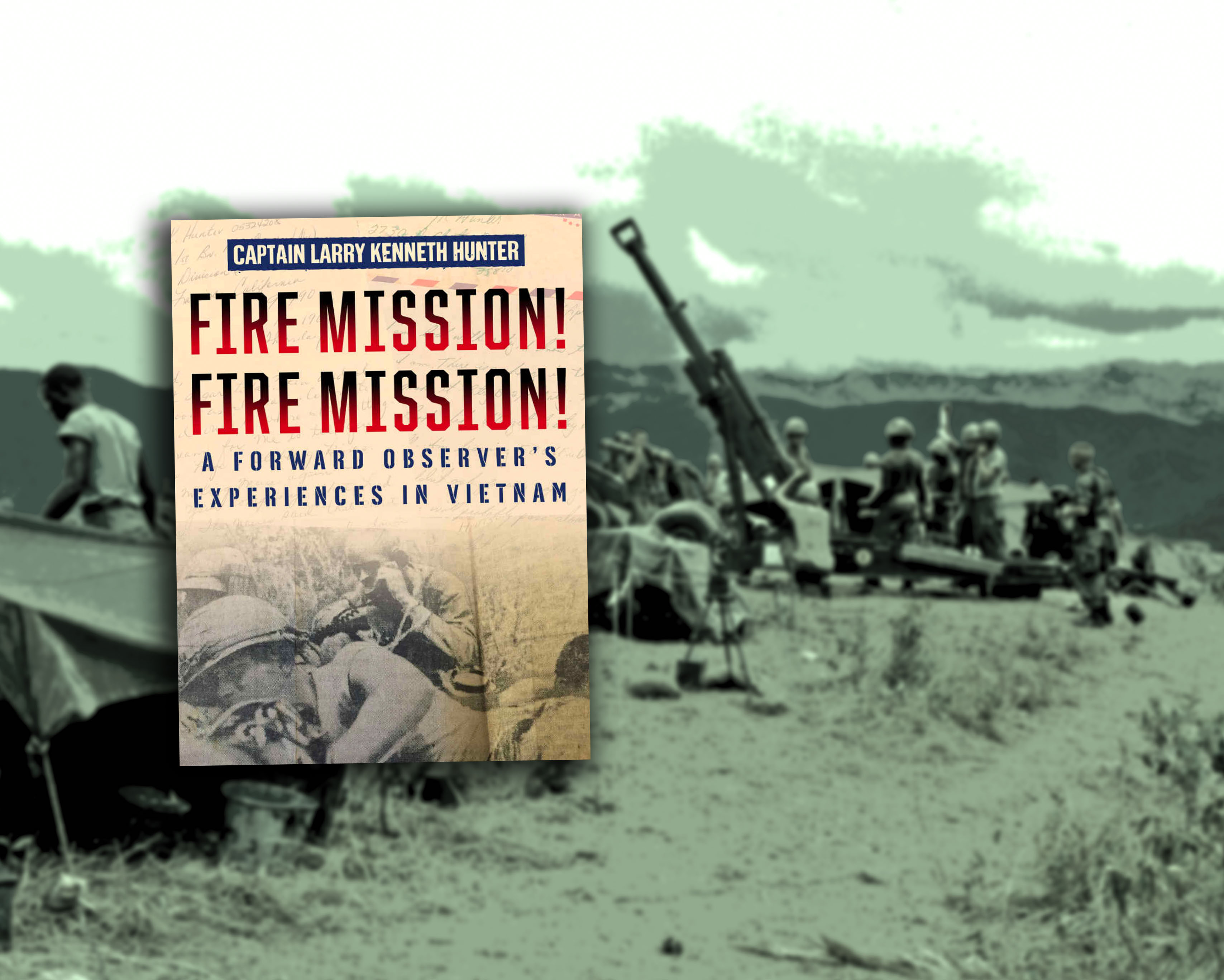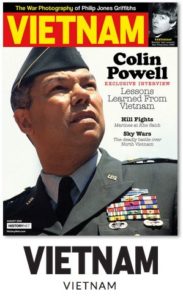In April 1966, after serving nearly eight months as a forward observer in the 1st Cavalry Division (Airmobile), Larry Hunter was reassigned to a 105 mm artillery battery. “I have a lot less worries about getting shot at,” wrote the battle-hardened lieutenant in a letter home. “Now that I’m away from the infantry, I’ll tell you that an artillery forward observer is one of the most dangerous positions over here (as if you didn’t already know).” Hunter recalls the dangers and the difficulties he experienced as an “FO” in Vietnam in his thoughtful memoir, Fire Mission! Fire Mission!
Born and raised in Huntsville, Alabama, Hunter graduated from Florence State (now the University of North Alabama) in 1965 and earned a commission through the school’s ROTC program. Hunter then attended the Officer Basic Course at Fort Sill, Oklahoma, where he received training in basic artillery tactics. “Each OBC officer was given five opportunities to call in artillery fire, adjust it, and then bracket a target,” Hunter noted. “This was the depth of my fire adjusting experience before ever arriving in Vietnam.”
Hunter arrived in Vietnam in September 1965 and was assigned to Company A, 1st Battalion, 12th Cavalry Regiment, as a forward observer for an artillery battery. The slender FO—fellow officers joked that he had a build like a “teepee center pole”—called in artillery fire whenever Company A made contact and then directed that fire support on the enemy’s troops.
Adjusting friendly fire support quickly and accurately was perhaps the most important function of any forward observer and often proved critical to the survival of his company. Hunter was expected to perform those tasks regardless of terrain and in all types of weather.
That October, while on a search-and-destroy mission east of the 1st Cavalry Division base at An Khe in South Vietnam’s Central Highlands, Company A encountered the enemy on a hill. Hunter grabbed the radio as bullets sped past and, flinging off his helmet, shouted, “Fire mission, fire mission!” A war correspondent nearby photographed him directing artillery fire over the radio. The image (reproduced on the front cover of the book) appeared in an article by The Associated Press. The following month, Hunter contracted malaria and spent four weeks in the hospital.
Much of Fire Mission! consists of letters Hunter exchanged with his wife, Judy. His “dispatches from the front” provide an intimate portrait of a young man at war, from the rain-swollen coastal rice paddies of the Bong Son Plain to the dusty streets of downtown Pleiku in the highlands, while Judy’s letters reflected the challenging realities of life on the homefront.
Hunter details troop movements and missions, including the hazards associated with calling in artillery fire during combat. Huddled next to the radio as fighting raged all around him, he often felt dangerously exposed to enemy fire. “You can’t imagine what a miserable time it was out there,” he told Judy, “worrying about being cut down by the enemy just any time.” Ironically, Hunter was nearly killed by friendly fire in February 1966 when a 250-pound bomb from an Air Force jet exploded in a muddy rice paddy no more than 20 feet away.
Fire Mission! vividly conveys the dizzying pace of American airmobile operations early in the war. Clambering aboard countless UH-1 Huey helicopters, Hunter participated in more than 25 air assaults, a rare accomplishment for which he was awarded an Army Air Medal.
Hunter received a Bronze Star for his actions on the evening of March 31, 1966. Surrounded by a large enemy force, the FO calmly and skillfully directed artillery fire, helicopter gunships and fixed-wing aircraft throughout the night, likely saving his badly mauled company.
Hunter was promoted to captain, left the Army in 1968 and returned to Alabama with Judy and their young son. “Once home, there were new kinds of challenging battles,” he noted. “Plant closings, relocating, learning new and different jobs, and the responsibility of decisions in personal and family adjustments.” Fire Mission! details the challenges Hunter faced in Vietnam and at home equally well. V
This review appeared in the August 2020 issue of Vietnam magazine. For more stories from Vietnam magazine, subscribe here and visit us on Facebook:






